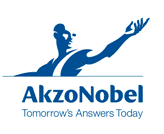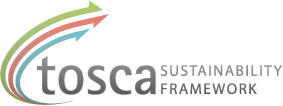
AkzoNobel: Implementation
‘Implementing sustainability is not so much a technical process’, says the Director of Sustainability, ‘but more of a change process. It is also a matter of weighting how fast the changes can be made. In 5 years time AkzoNobel has embedded sustainability in the management cycle and make big steps forward in its supply chain processes. Sustainability must contribute to improve business and it is therefore not possible to move faster than the point where the businesses see benefits in such work.’
From 2009, the combined financial and sustainability KPI dashboard is being monitored quarterly by AkzoNobel Board members. The performance is being managed in an integrated way across the business and will be reviewed on the basis of a balance “scorecard” taking into consideration both criteria. AkzoNobel believes this dual approach will create greater transparency and, ultimately, more value for our stakeholders.
The work with implementing sustainability in all of the Business Units (BUs) is audited by an external auditor. There are differences in the progress of implementation. Some BUs have sustainability in full place and some need further improvements. This is reported in the BU audit reports, where there is a part about environment, a part about social aspects and a part about governance.
Pilot studies and projects are often used in the development and implementation of policies; see for example the Carbon Policy. In order to make things happen the Dow Jones Sustainability Index, DJSI, is used as a benchmark for the bonus system of the BU managers. AkzoNobel believes the DJSI focuses on important sustainability issues, they are credible and give a comparable score each year. Therefore it is also credible to be used as part of the bonus system and the balance scorecard. The DJSI is not a holy grail or a goal in itself. However, it is used to see the strong and weak points in a work towards sustainability. The goal is to improve on the weak parts and then processes or programs are put into place to improve on these parts. The focus is on four areas: Talent development, Safety (Behaviour Based Safety, BBS), Advanced eco-efficiency (eco-premium solutions, carbon strategy, eco-efficiency across product life cycles) and operational eco-efficiency (increasing the eco-efficiency of our own activities). The long term focus areas for AN are dematerialization, renewable energy and renewable products and the main opportunity lies in finding new technology.
The specific sustainability objectives of the AkzoNobel strategy are:
- Remain in the top three in the Dow Jones Sustainability Index
- Reduce our Total Reportable Rate of injuries to 2.0 per million working hours by 2015, equivalent to the best five of our peer sector
- Deliver a step change in people development, in part through substantially improving the diversity in our company
In order to make things change, these objectives have been reformulated into actions. This way AkzoNobel is continuously integrating sustainability into many aspects of operations and the progress of integration is monitored and included in the Business Units balance scorecard. The focus is currently on:
- Improving our safety performance
- Increasing turnover from eco-premium solutions, products that are both eco-efficient and attract a premium
- Developing sustainable water management at all sites
- Reducing our carbon emissions from cradle to gate, through the carbon policy
- Adherence to and training in our Code of Conduct
- Strengthening the diversity of our workforce
- Implementing leading people development programs, such as the Leadership on the edge.

